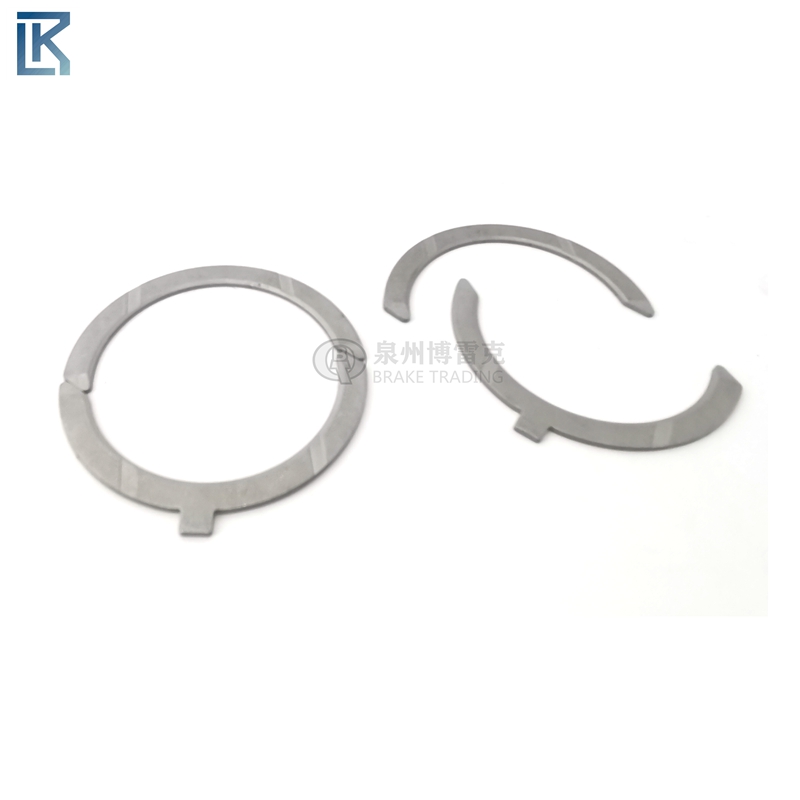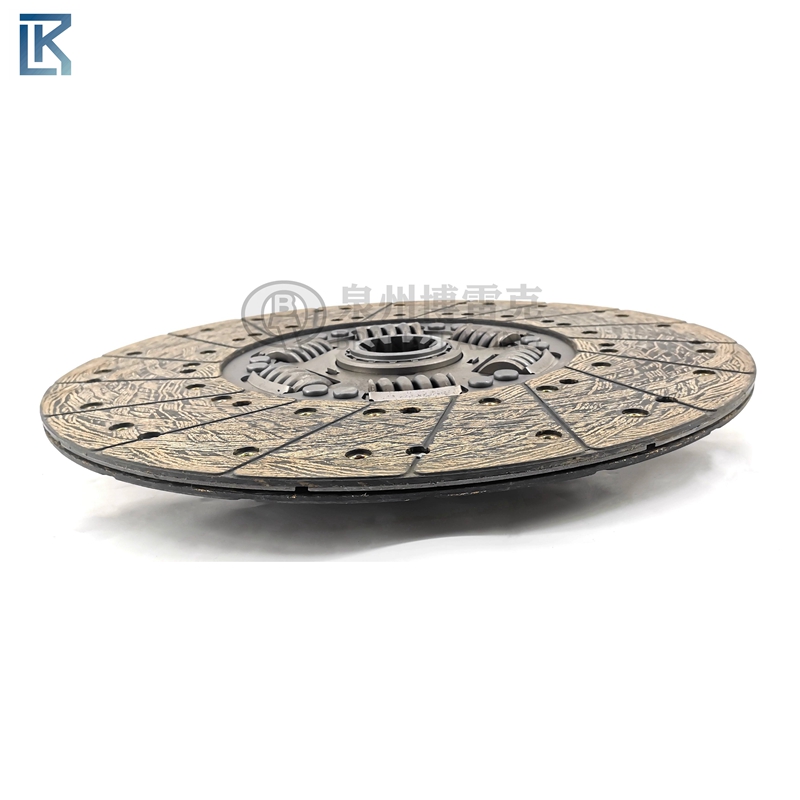One of the most important engine bearing properties is fatigue strength. Fatigue cracks start on the surface and then penetrate into the material. All layers of a multilayer bearing material must have fatigue strength that is greater than the actual load applied to the bearing.
Engine bearings must work in a fully hydrodynamic oil film regime to survive. Bearing operation in highly loaded race engines is characterized by ultra-thin oil film and frequent direct contact between the bearing and journal surfaces. Without the proper oil clearances and oil viscosity, bearings can fail due to oil starvation and eventual seizure. Bearing material fatigue can also cause bearings to fail. Fatigue results when bearing materials are overloaded. Today’s OE and custom-built racing engines are producing more horsepower than ever before. They require bearing materials that can take more load due to popular turbo-charging and super-charging. Due to the increase in bearing loading, oil film thickness may be insufficient to prevent metal-to-metal contact between the bearing and journal surfaces. One more challenge of highly loaded engines is insufficient rigidity of their crankshafts and housings. Crankshafts bend under load. Their journal surfaces becomes non-parallel to the bearing surfaces. This causes local breaking of hydrodynamic lubrication and edge wear. Bearing overloading can cause the layered materials to crack and separate from their respective steel backs. The separated bearing material particles disrupt the much needed oil film, causing damage to both the bearing and the crankshaft journal surfaces. Torque Rod Bush

The solution to this problem is building stronger bearings for use in these high horsepower racing engines, especially diesel race engines (Diesel Performance applications for Powerstroke, Cummins & Duramax, Sport Compact applications for BMW, Audi & Toyota Supra, to name a few) and high compression ratio alcohol fuel engines (Sprint Car) that produce high pressure in the cylinders.
King bearings has stepped up, and addressed the need for stronger bearings to withstand higher combustion pressures and increased horsepower. One of the stronger materials developed by King is the SV (uncoated) / GPC (coated) series bearings. King’s SV series consists of a unique tri-metal construction that can withstand 30% more load than any other available bearing on the market. SV features a special high strength steel back, a high tin, lead free bronze second layer(that was specially developed for extreme load capacity), and an electroplated silver matrix overlay that serves as an antifriction layer.
The GPC material is created by applying a unique formulated K-340 nano-polymer coating on top of the SV construction with no added thickness. K-340 coating providing excellent antifriction properties (conformability, embedability, and seizure resistance). The K-340 is a strong coating, offering exceptional wear resistance, toughness and fatigue strength. It was created for applying over relatively hard substrates: bronze, aluminum alloys, sputter overlay, and King silver overlay. Hardness of the coating is about 46 HV, which is harder than most aluminum bearing alloys. The coating is able to operate under loads up to 17,400 psi (120 MPa) in diesel direct injection engines, turbocharged gasoline engines and alcohol fuel engines.
Like other King coatings, the GPC coating protects against oil starvation and metal-to-metal contact.
The design and unique materials of King GPC bearings enable them to operate under mixed (partially hydrodynamic) lubrication conditions and extremely high load capacity while providing excellent conformability.
Polymer coatings in the engine performance industry have become extremely popular in the past 5 years. The usage of polymer coatings has been widespread, not only in engine bearings, but also in pistons, cylinder heads, bolts, and other engine parts operating in heated and pressured environments. King Engine Bearings has been at the forefront of
Polymer coatings in the engine performance industry have become extremely popular in the past 5 years. The usage of polymer coatings has been widespread, not only in engine bearings, but also in pistons, cylinder heads, bolts, and other engine parts operating in heated and pressured environments.
King Engine Bearings has been at the forefront of polymer coating technology, with research and development efforts led by Dr. Dmitri Kopeliovich to expand its range of polymer-coated materials. The result was creating various solutions for different types of challenges, each tailored to suit unique engine characteristics.
The GT35 turbo, which is a universal application turbo, is fit for any four or six-cylinder engine, as well as 3.0L-6.0L engines.
MaXpeedingRods, a manufacturer of performance parts such as connecting rods, crankshafts, turbochargers, and coilovers, has announced sponsorship of British Drift Championship racers Oliver Evans and Duane McKeever. The performance parts company, established in 2006, reaches more than 4 million car enthusiasts across America, Australia, Asia, Europe and other countries. Oliver Evans, who hails from the
Cleaning is being done every day and is an integral part of many businesses and their processes. One of the most commonly asked questions about using sodium bicarbonate (a.k.a. baking soda) as a blasting abrasive is simply: How does it work? Let’s start with: What is abrasive blasting? Abrasive blasting uses either pressurized air or
Forged pistons have been made in the same way for decades, with differences in machining differentiating one supplier’s product from another. But now, a new development called Aligned Grain Flow Technology (AFT) provides a breakthrough for additional strength without additional mass. After several years of experimentation and development by JE Pistons’ Advanced Product Development group,
Piston crown coating is a surprisingly affordable way to increase engine efficiency, horsepower and durability. It’s often said the internal combustion engines, which hold a special love/hate place in our heart, are basically air pumps, and while that’s a useful mental model when considering many aspects of how they operate, it’s more accurate to say
It’s been more than 100 years since the idea for a turbocharged engine was developed. Originally their use had been limited to very large diesel engines and while there have been additional innovations for use in automobiles, it was not always the most popular power adder. The boost was powerful but the cost was too
Sleeving an engine block is done for two primary reasons. The first is to repair a cracked or otherwise damaged cylinder to save the block. The second is increasing displacement by allowing for a larger bore size. In either case, the sleeving process must be performed carefully to ensure satisfactory results. Careful measurements are required

Steering System Drag Link Ball Joint Content for engine professionals and enthusiasts